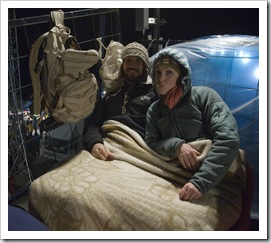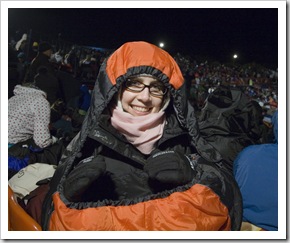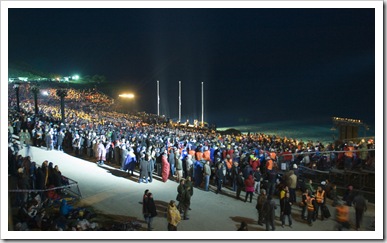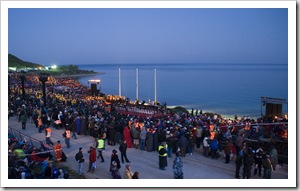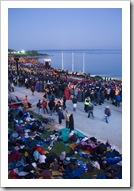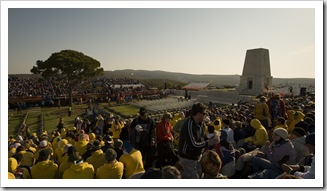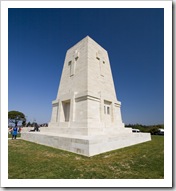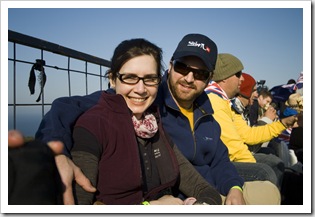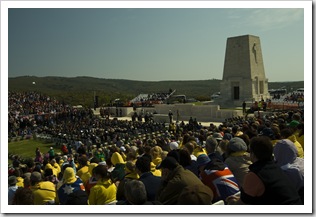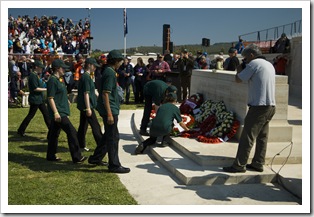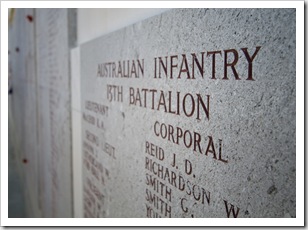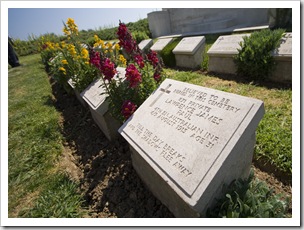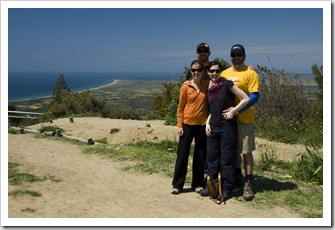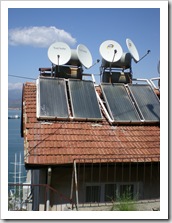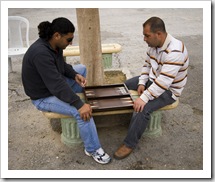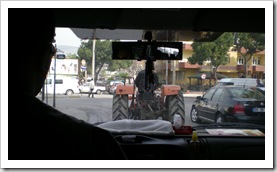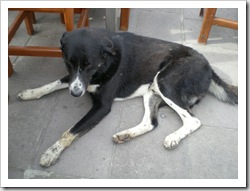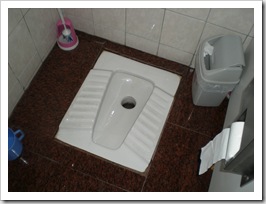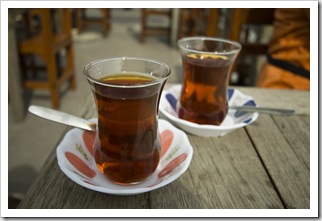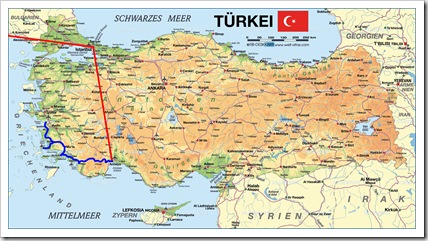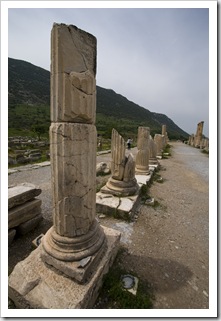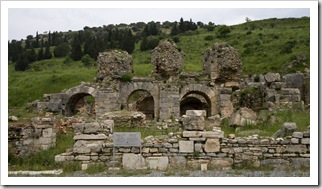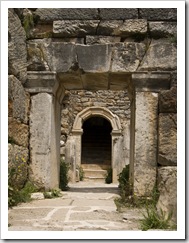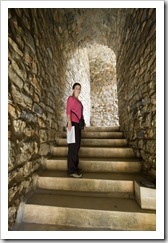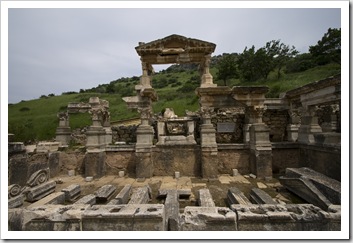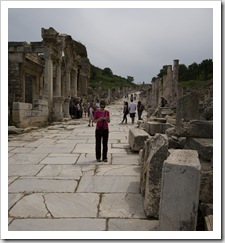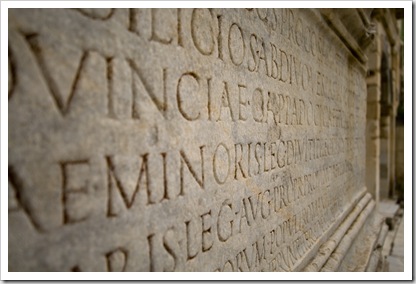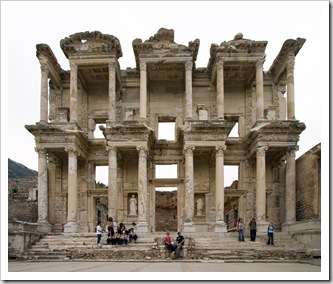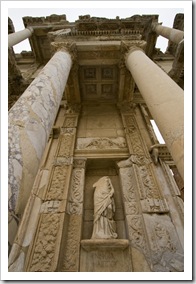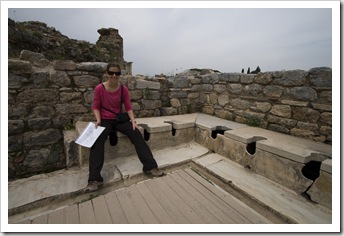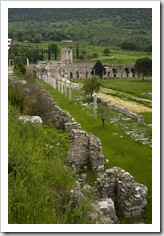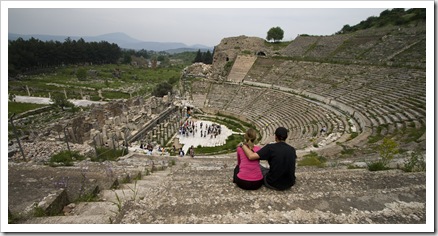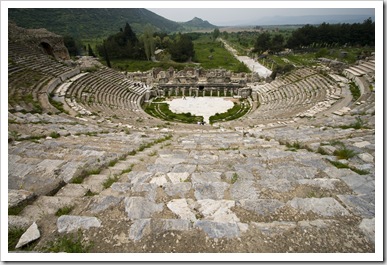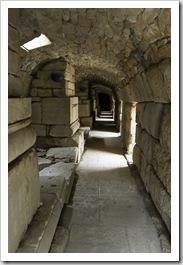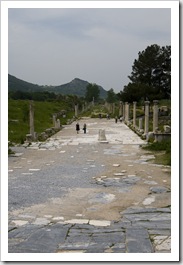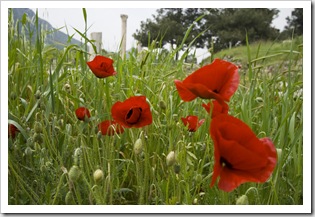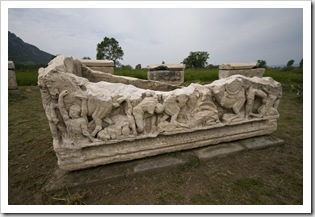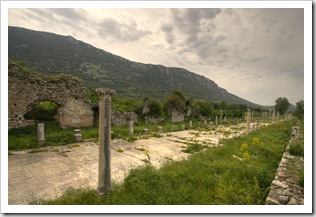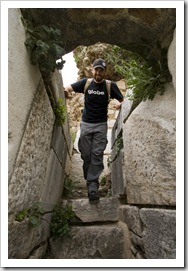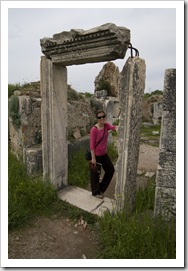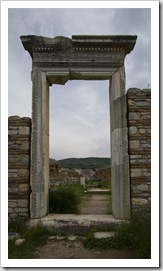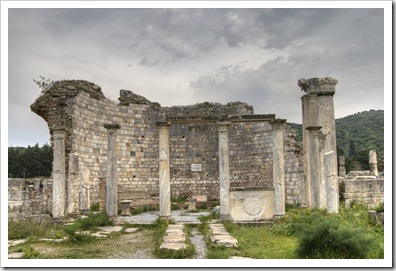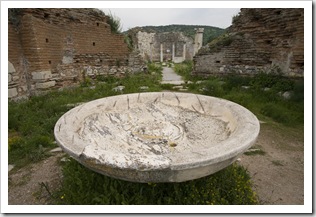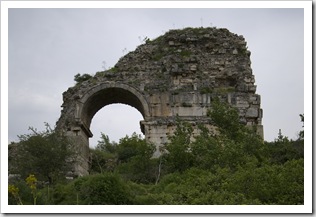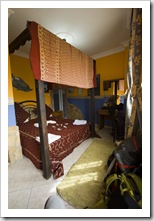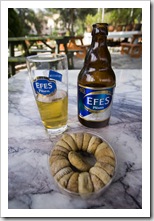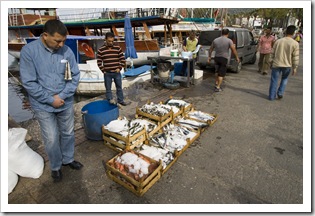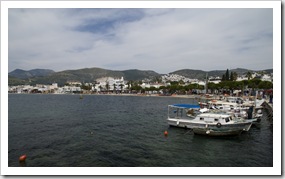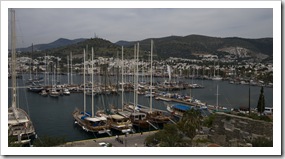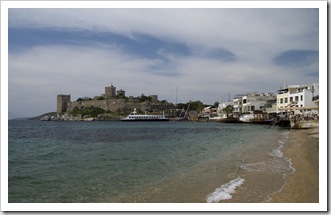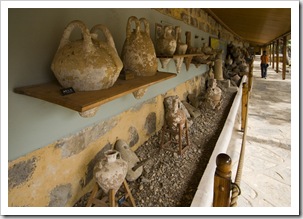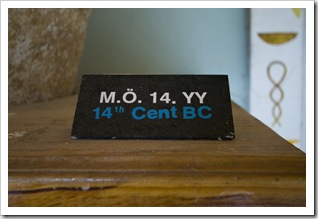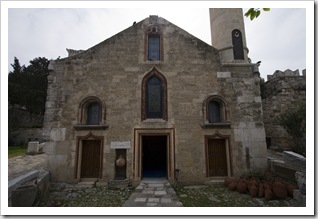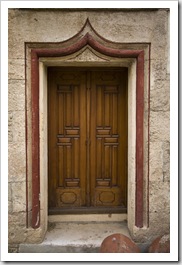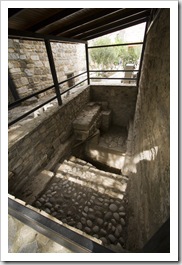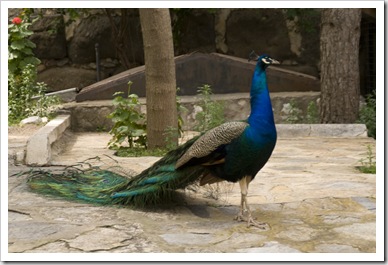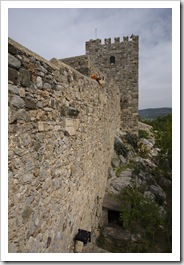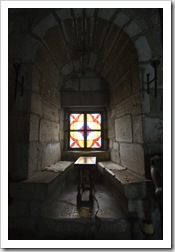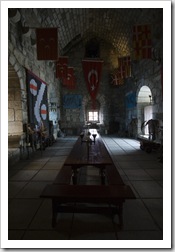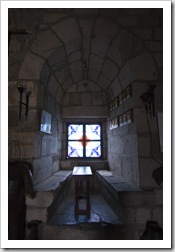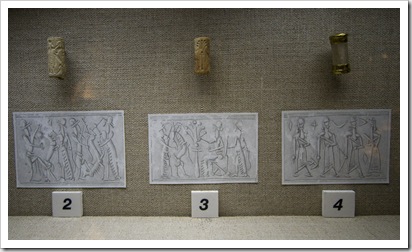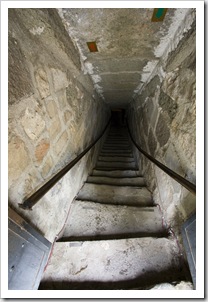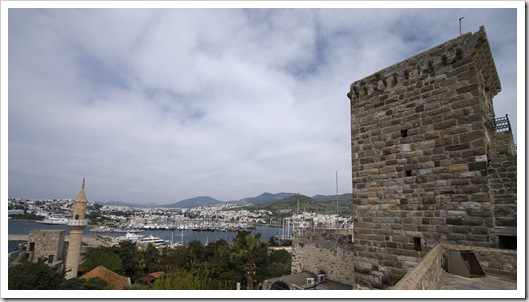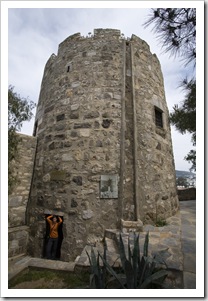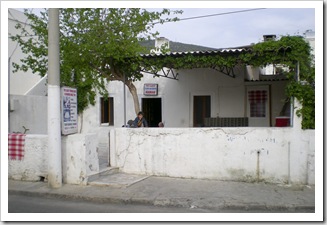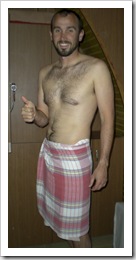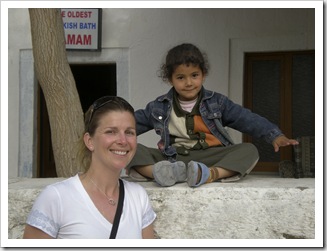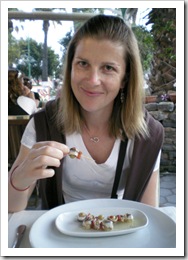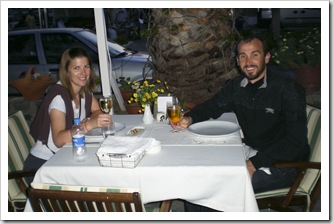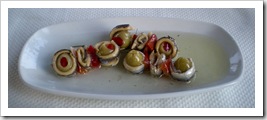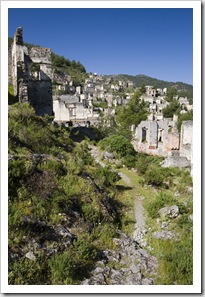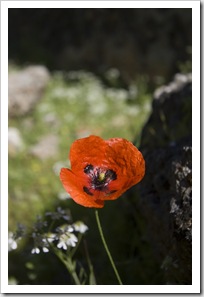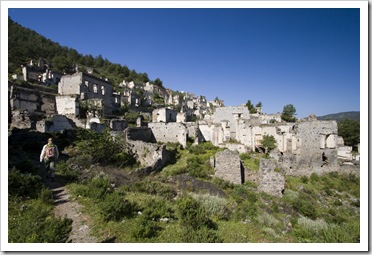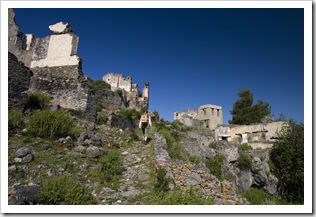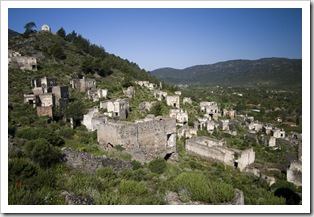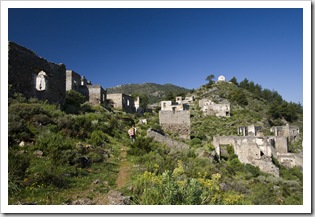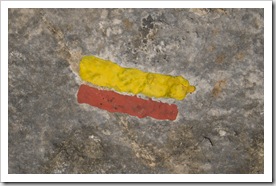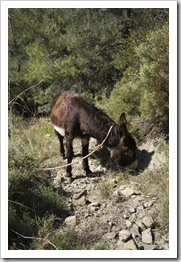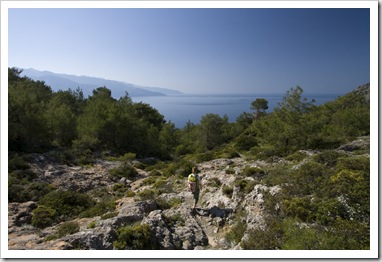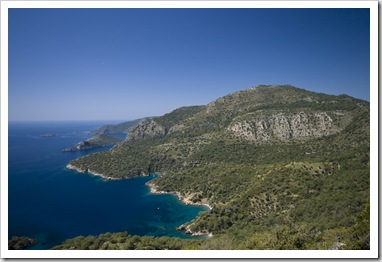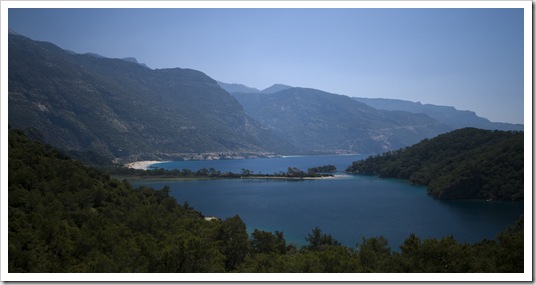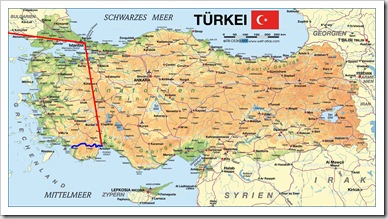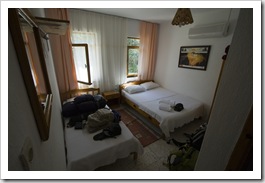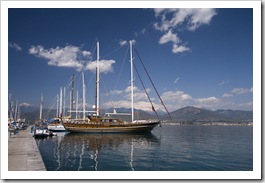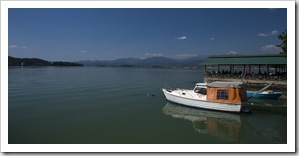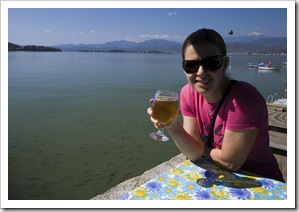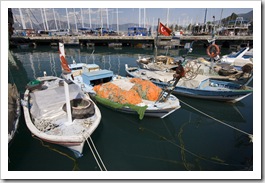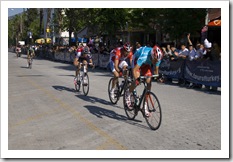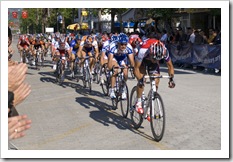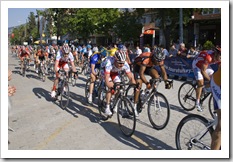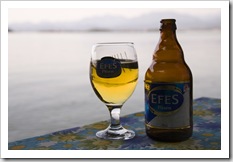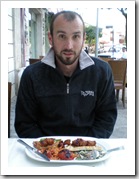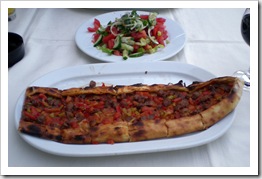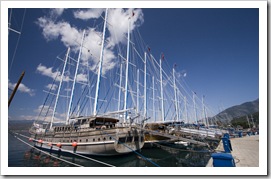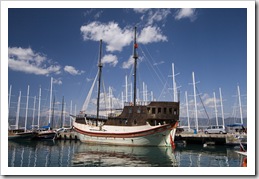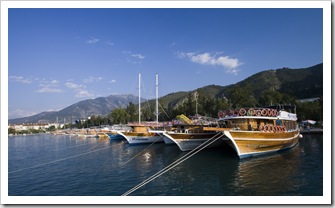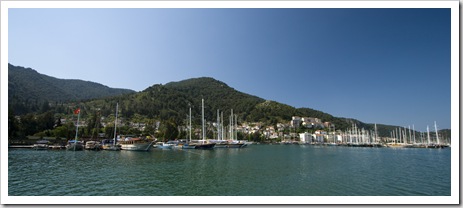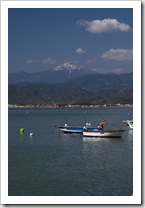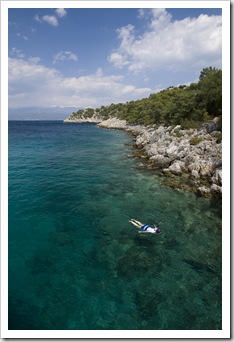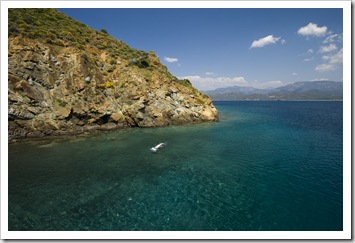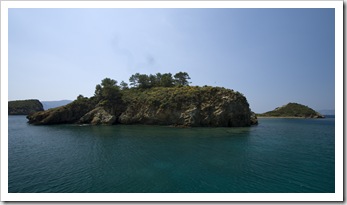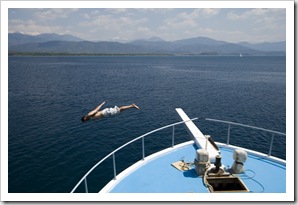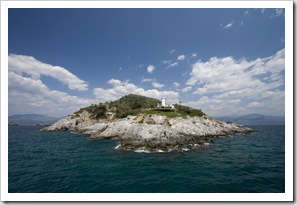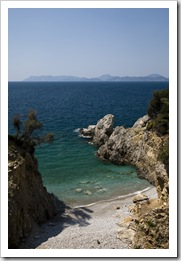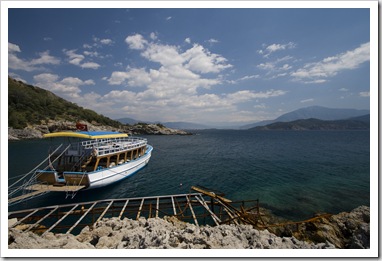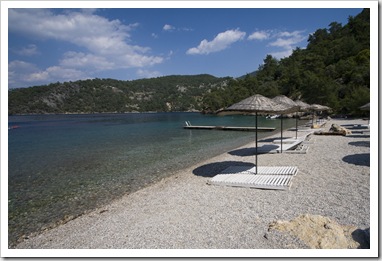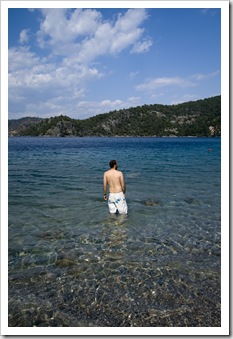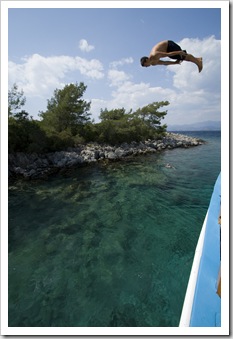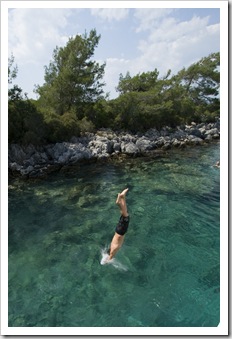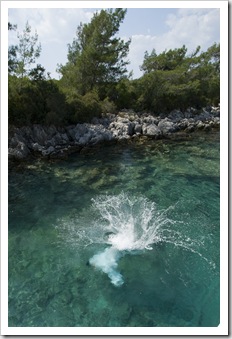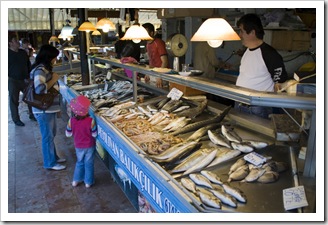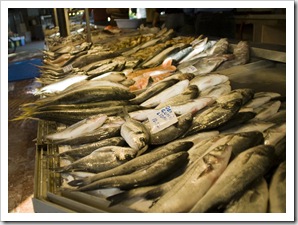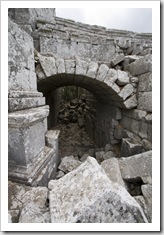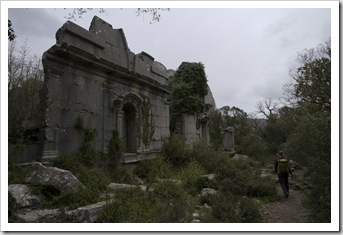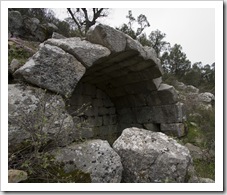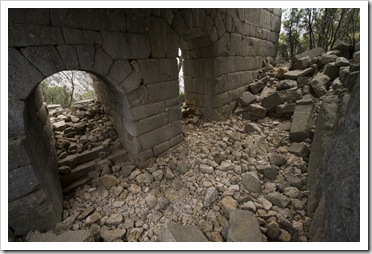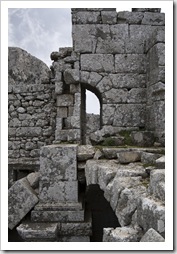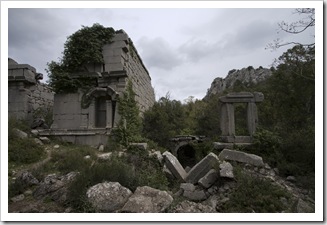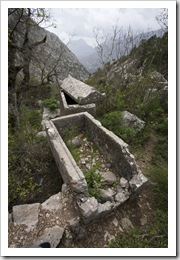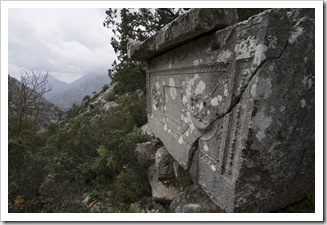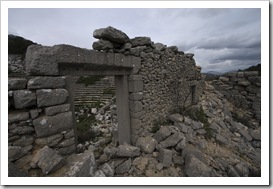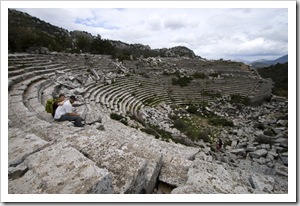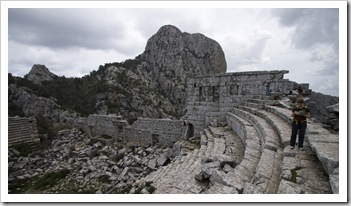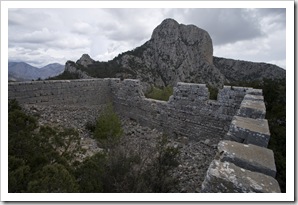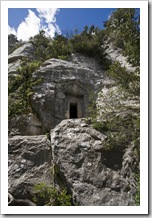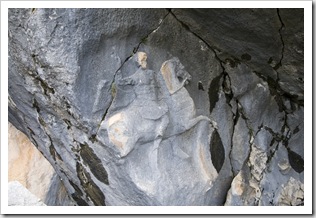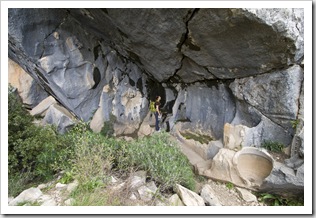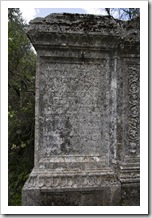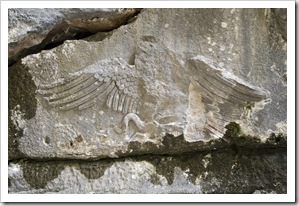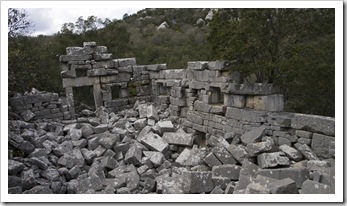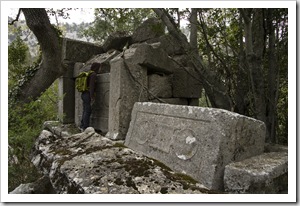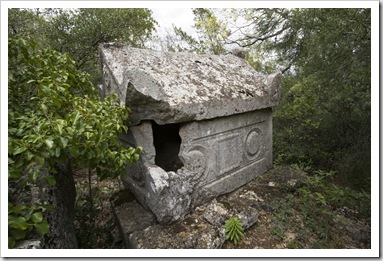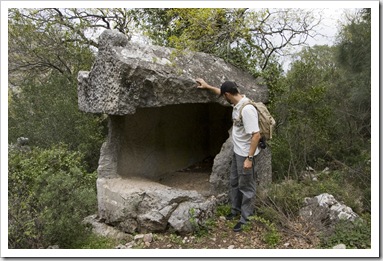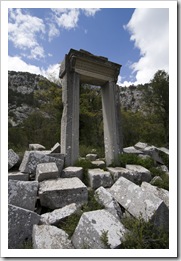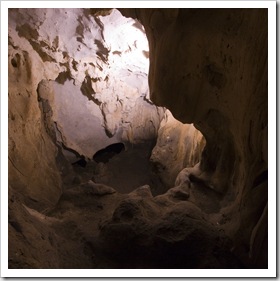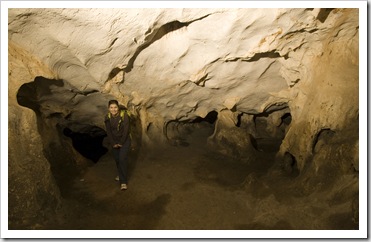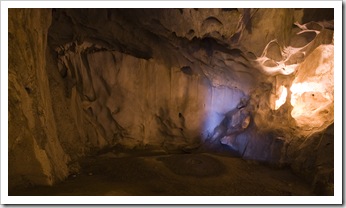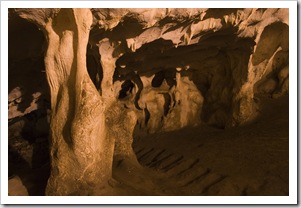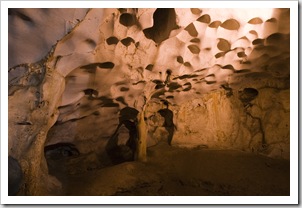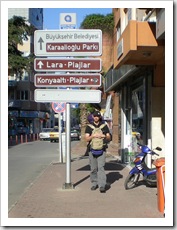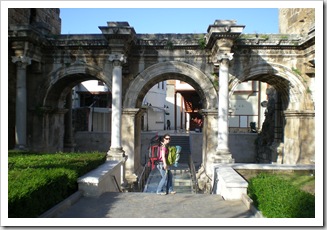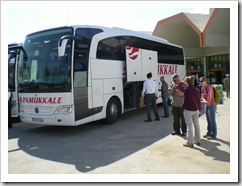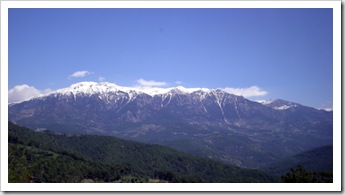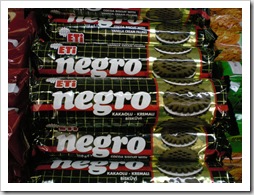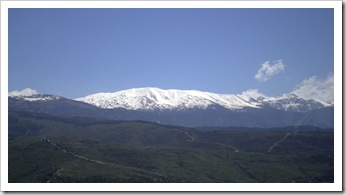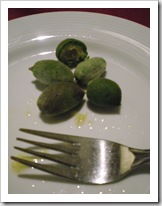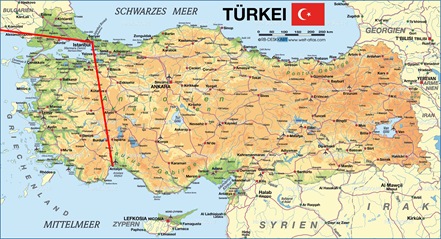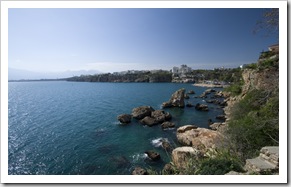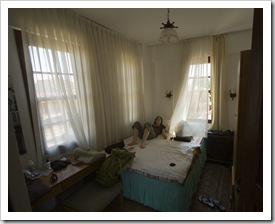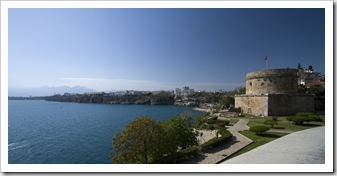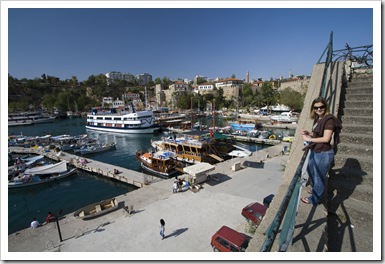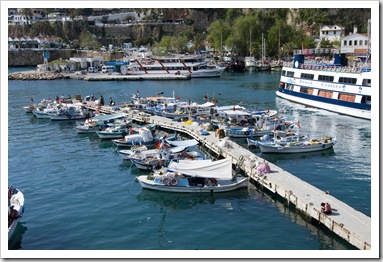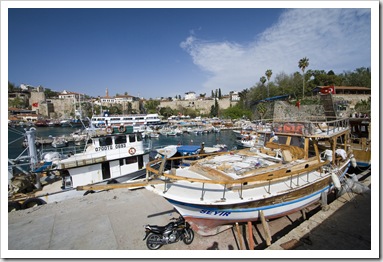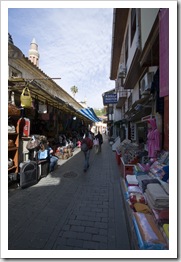Planet View: N40°14.463’ E26°16.901’
Street View: N40°14.463’ E26°16.901’
Temperature: 8°C (46°F)
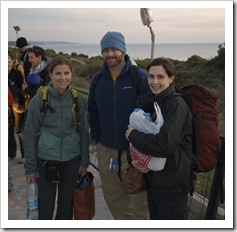 ET organized for the four of us to spend Anzac Day at Gallipoli on an organized tour with Intrepid. We caught a 12:00PM Intrepid bus (that ended up being a 1:30PM Intrepid bus) from Istanbul out along the Gallipoli Peninsula through Eceabat for dinner and onto Anzac Cove for the night. For those of you reading this that are unaware of the significance of Anzac Day: on April 25, 1915
ET organized for the four of us to spend Anzac Day at Gallipoli on an organized tour with Intrepid. We caught a 12:00PM Intrepid bus (that ended up being a 1:30PM Intrepid bus) from Istanbul out along the Gallipoli Peninsula through Eceabat for dinner and onto Anzac Cove for the night. For those of you reading this that are unaware of the significance of Anzac Day: on April 25, 1915 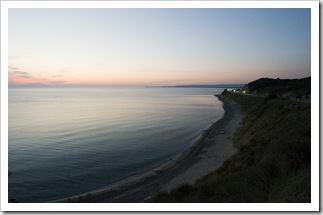 the Australian and New Zealand Army Corps (ANZAC) soldiers stormed the beaches at Gallipoli in an attempt to take the Gallipoli Peninsula for the Allies and force Turkey (then a German ally) out of World War One. Gallipoli was a key strategic location along the peninsula protecting the thin strait of the Dardanelles, a narrow stretch of water that marks the only seagoing path to Istanbul. What was anticipated to be a short campaign and easy victory for the Allies turned into a nine month battle resulting in the loss of more than 100,000 Allied troops and more than 200,000 Turks. Ultimately, the Allies withdrew and ceded to the ferocious Turkish soldiers. The battle has resulted in a strong bond of respect between Turks, Australians and New Zealanders and in recent years thousands of Aussies and Kiwis have been making the pilgrimage to Gallipoli for Anzac Day to remember those lost at the site.
the Australian and New Zealand Army Corps (ANZAC) soldiers stormed the beaches at Gallipoli in an attempt to take the Gallipoli Peninsula for the Allies and force Turkey (then a German ally) out of World War One. Gallipoli was a key strategic location along the peninsula protecting the thin strait of the Dardanelles, a narrow stretch of water that marks the only seagoing path to Istanbul. What was anticipated to be a short campaign and easy victory for the Allies turned into a nine month battle resulting in the loss of more than 100,000 Allied troops and more than 200,000 Turks. Ultimately, the Allies withdrew and ceded to the ferocious Turkish soldiers. The battle has resulted in a strong bond of respect between Turks, Australians and New Zealanders and in recent years thousands of Aussies and Kiwis have been making the pilgrimage to Gallipoli for Anzac Day to remember those lost at the site.
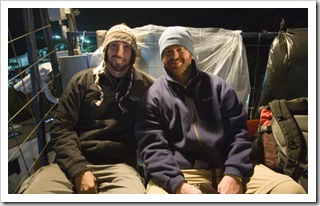
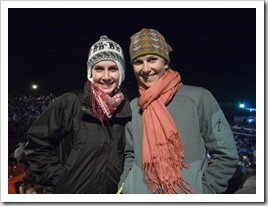 We arrived at Anzac Cove around 7:30PM on Anzac Day Eve, walking the 800 meters from the bus drop off to Anzac Cove to join crowds for the nights in the grandstands and lawn area. The total number of attendees ended up being a little more that 7,500. Anzac Cove is actually quite small but the combined efforts of the Australian, New Zealand and Turkish governments transform the national park into a well organized event with food stands and sometimes quite moving documentaries that ran through the night on big screens. It was probably the coldest night of my life; Lisa and I borrowed a large blanket from our hotel for the night, Sally and ET had a sleeping bag each with them so didn’t feel the chilly 8°C (46°F) night air as much as we did as we huddled together.
We arrived at Anzac Cove around 7:30PM on Anzac Day Eve, walking the 800 meters from the bus drop off to Anzac Cove to join crowds for the nights in the grandstands and lawn area. The total number of attendees ended up being a little more that 7,500. Anzac Cove is actually quite small but the combined efforts of the Australian, New Zealand and Turkish governments transform the national park into a well organized event with food stands and sometimes quite moving documentaries that ran through the night on big screens. It was probably the coldest night of my life; Lisa and I borrowed a large blanket from our hotel for the night, Sally and ET had a sleeping bag each with them so didn’t feel the chilly 8°C (46°F) night air as much as we did as we huddled together.

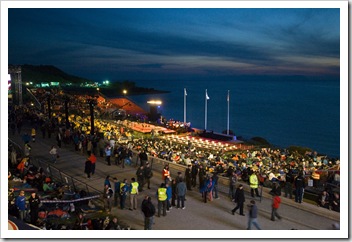 The dawn service was a welcome start to the day as we’d sat there all night waiting for it, the Australian Army band performed renditions of WWI marching tunes and the various countries’ national anthems as a supplement the service, which was actually quite moving. We ventured to the food stands at around 7:30AM and shelled out for a chicken doner (similar to a gyros [yiros]) each, at the time that doner tasted like the world’s best item of food combining meat and starch! After the dawn service was complete we walked the three kilometers to the Lone Pine service to commemorate the Australians who fell, then further up the hills to the final memorial at Chunuk Bair (N40°15.143’ E26°18.494’) for the New Zealand service. The Australian service at Lone Pine was excellently done, the rendition of Waltzing Matilda by the Australian Army band very emotive. A stirring feeling to sit there and think that 94 years prior thousands of troops had perished at the area in which we were seated.
The dawn service was a welcome start to the day as we’d sat there all night waiting for it, the Australian Army band performed renditions of WWI marching tunes and the various countries’ national anthems as a supplement the service, which was actually quite moving. We ventured to the food stands at around 7:30AM and shelled out for a chicken doner (similar to a gyros [yiros]) each, at the time that doner tasted like the world’s best item of food combining meat and starch! After the dawn service was complete we walked the three kilometers to the Lone Pine service to commemorate the Australians who fell, then further up the hills to the final memorial at Chunuk Bair (N40°15.143’ E26°18.494’) for the New Zealand service. The Australian service at Lone Pine was excellently done, the rendition of Waltzing Matilda by the Australian Army band very emotive. A stirring feeling to sit there and think that 94 years prior thousands of troops had perished at the area in which we were seated.
The ride back to Istanbul was a little trying, after getting only a couple of hours sleep the night before and sitting in the hot sun all day our bus ended up being one of the very last buses in the queue to retrieve us from the pickup point. Considering that there were more than 400 buses to transport over 7,500 visitors this meant we waited for around three hours to make our way back onto the bus for the six hour trip to Istanbul. By the time we arrived at our pansiyon in Istanbul we were all pretty beat, to say the least. The trip was was quite an experience and even though the night in the cold and crowds were a little trying at times I think it’s something I’ll look back on and be glad I was able to witness. If I ever do go again I’ll be sure to take a sleeping bag next time!
